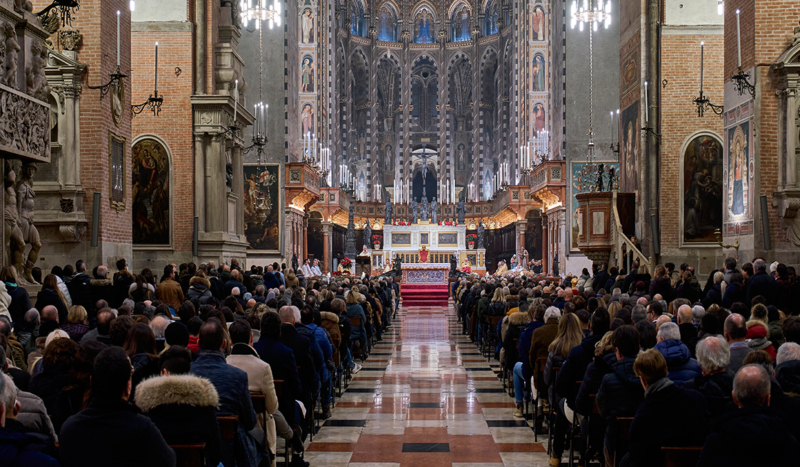
Adobe Stock
CV NEWS FEED // American Catholics have little to no idea how to define “synodality,” according to a recent survey that attempted to measure the success of the ongoing Synod on Synodality.
Catholic Laity and Clergy for Renewal conducted a survey among 537 U.S. Catholics of varying ages and genders, asking them “In your own words, describe what authentic synodality means in a Catholic context.”
The survey told participants to answer “I don’t know” if they could not define synodality.
“It immediately became apparent that most rank-and-file Catholics have little understanding of synodality,” Jayd Henricks, President of Catholic Laity and Clergy for Renewal wrote. “Of the 537 respondents, only 39 said they did know and gave a response that could (very generously) be described as having anything to do with synodality. So 7%, at best, knew what synodality is.”
Synodality has been described by the Vatican as a global process that encourages Catholics to “walk together” and spread the Gospel under the direction of the Holy Spirit. The three-year process of the Synod on Synodality has proved to be contentious, as it has forced Church officials and laity to focus heavily on accepting same-sex attracted individuals or ordaining women as priests.
Henricks said that the findings of the survey were unsurprising, but he noted that the lack of comprehension of synodality does not correspond to the amount of money and time that the Church has spent promoting it to the faithful.
The survey also asked Catholics if they believe the three-year effort to advance synodality in the Church is a good use of resources and time. Of the 18 respondents who vaguely knew about the three-year process, only six agreed or strongly agreed. Seven were neutral. One did not know. Four disagreed or strongly disagreed.
A small number of respondents additionally provided a list of positive and negative things they associated with the Synod. Positive responses included the Synod’s inclusion of laity’s opinions, as well as its commitment to open dialogue, inclusivity, and “engagement among diverse groups.” Negative responses included lacking “inclusion for dissenting views,” focusing too much on same-sex attraction or women’s ordination, being too slow, and allowing Germany to push for a “revision of the church’s teachings on basic morality.”
Henricks pointed out that the Vatican had conducted a similar survey on X that has since been deleted. The survey had produced almost the same results as the Catholic Laity and Clergy for Renewal survey.
The Vatican had asked Catholics to answer the question: “Do you believe that synodality as a path of conversion and reform can enhance the mission and participation of all the baptized?,” which resulted in confusion and overwhelmingly negative responses (88%).
“Clearly the Vatican did not get the response they expected or desired, but rather than address the negative reaction directly, they simply removed any trace of the poll,” Henricks wrote.
Henricks remarked that perhaps the Church should be less “self-referential,” “as modeled by the Synod on Synodality,” and instead be more interested in what God wants.
Henricks added:
That is, how do we grow in holiness? It is hard to imagine he wants more meetings about meetings. But it is easy to imagine he wants more of what we witnessed at the recent Eucharistic Congress: a Church in worship around the one, true God. That seems like a worthwhile exercise.

